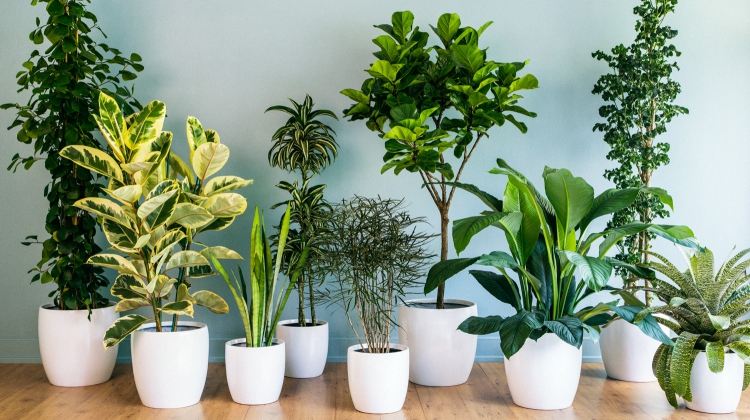Time has changed with people moving from small towns to cities, in search of job or better opportunities. And it has drastically increased the population of major cities and concurrently the pollution has also peaked. It has resulted in incorporating plants as air purifiers at home.
Plants, besides removing CO2 and emitting oxygen, can act as air purifiers as they absorb harmful toxins from the air. A NASA experiment published in 1989 found out that indoor plants can help in maintaining the air quality, especially in the enclosed spaces which have very little airflow. Based on these findings, many further studies were conducted regarding the cleaning ability of house plants. It was discovered that growing indoor plants used lesser power than air purifiers, hence they make the most cost-effective and natural solution to keep the air clean. Needless to mention that plants have therapeutic effects on humans.

Indoor houseplants can quickly boost mood and productivity. These help in enhancing concentration and reducing fatigue or even stress. NASA recommends placing two to three plants in eight to ten inches pots for every hundred square feet. It further recommends keeping the following plants at home for air purification:
Bamboo palms (Chamaedorea seifrizii)
Bamboo plants are now kept in most households. These are elegant and sturdy. It adds to the air quality at your house. It is known for absorbing harmful xylene, carbon monoxide, benzene, formaldehyde, chloroform and more.
Spider plants (Chlorophytum comosum)
The spider plant is known to eliminate formaldehyde and xylene from the air in your house. It grows quickly and can be planted in a basket hanging at your window. These add to an exquisite look at your home with the white blossoms. It is also easy to manage as it requires watering only two to three times a week.
Golden pothos (Epipremnum aureum)
Keeps benzene, carbon monoxide, xylene and formaldehyde at bay with this beautiful indoor plant that grows up to 8 feet. It also gives you the leverage to trim it as per your liking and requirement. Also, it is highly manageable as it requires watering only when the soil gets dry.
Dracaenas
Dracaenas can easily pull formaldehyde, xylene, toluene, benzene or trichloroethylene from the air in your house. It comes in varied shapes, sizes and colours. You can choose either from the tall corn plant or may opt for the rainbow plant according to your liking.
Chrysanthemums (Chrysanthemum morifolium)
Harmful ammonia, xylene, benzene and formaldehyde can be kept away with the use of this indoor plant which is ranked the highest in purifying the air. However, the flower blossoms for only six weeks and without the flower, the plant doesn’t help in air purification.
Maintaining high air quality in our surroundings is our responsibility, especially when we do not have much access to cross airflow. Plants can help with air quality and have many additional health benefits that air purifiers lack. Therefore, it is highly recommended to keep indoor plants and keep it ventilated as much as possible.

